My name is Nick Konz, and I’m a 2nd year Ph.D. student in the Mazurowki Lab. During September 18th-22nd I presented my paper at MICCAI 2022, the 25th International Conference on Medical Image Computing and Computer-Assisted Intervention, in Singapore.
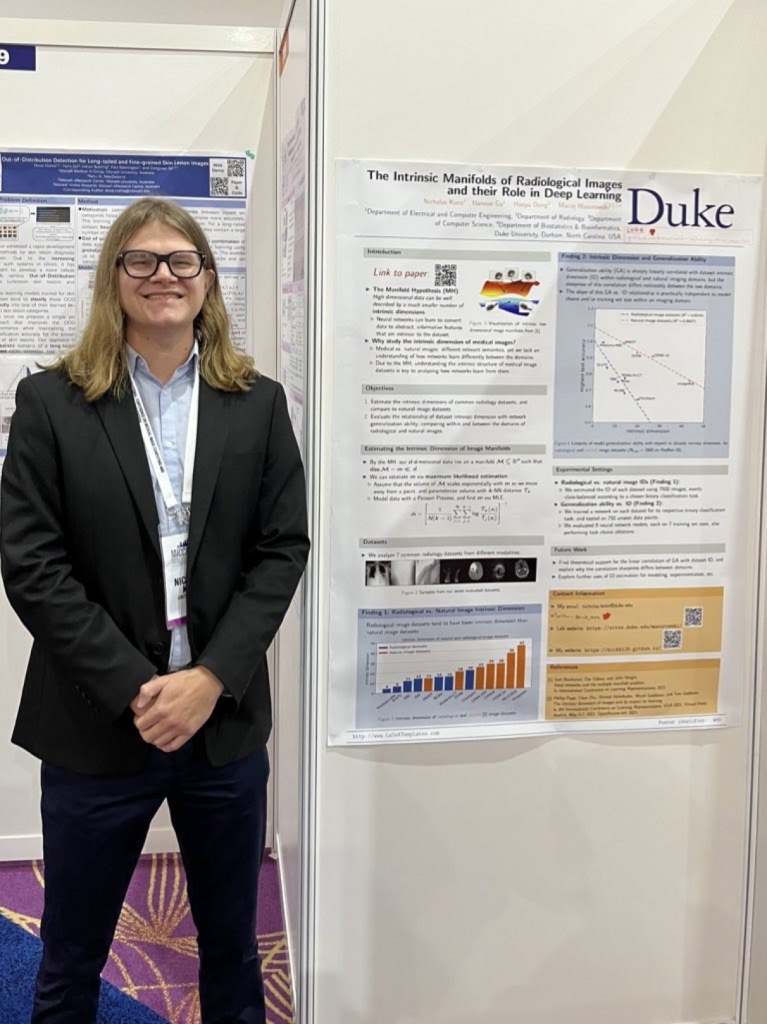
MICCAI is the leading conference for my field (medical image analysis with machine learning), so I wanted to post my thoughts on the conference and the research presented there, as it is the bleeding edge of this science.
Introduction
Singapore is a very long flight from North Carolina (about 24+ hours for me), but it was very much worth it. A wonderful destination, both for a conference and for traveling in general. Here’s a picture of the “Jewel” waterfall in the airport:
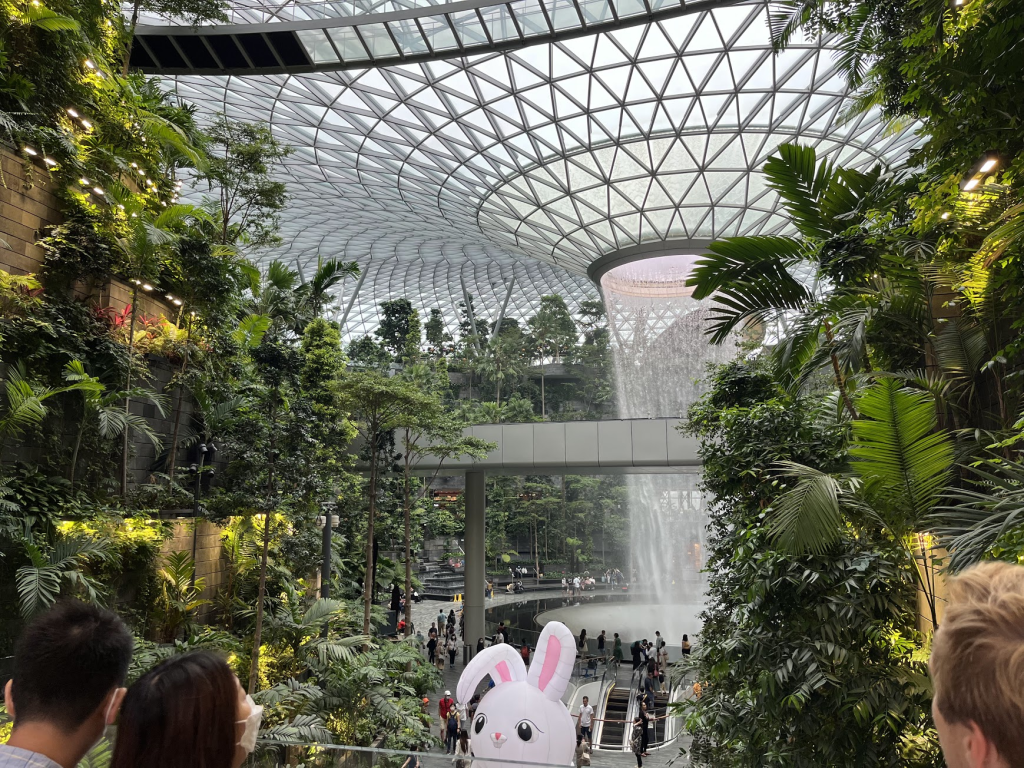
The city is full of delicious food and drink, and the nightlife is very fun.

Conference Summary
Anyways, onto the science! The conference itself was huge, with over a thousand in-person attendees, and a schedule packed with scientific talks, poster presentations, social events, and more. This is what the oral presentation stage looked like, to get an idea of the scale:
And here is a sample daily schedule:

There were eight oral presentation sessions total, each one with around 5-7 10-minute presentations of papers relevant to a specific topic (for example, image segmentation).

There were also eight poster sessions between the oral sessions with about 40 posters per session, also grouped into some general topic.
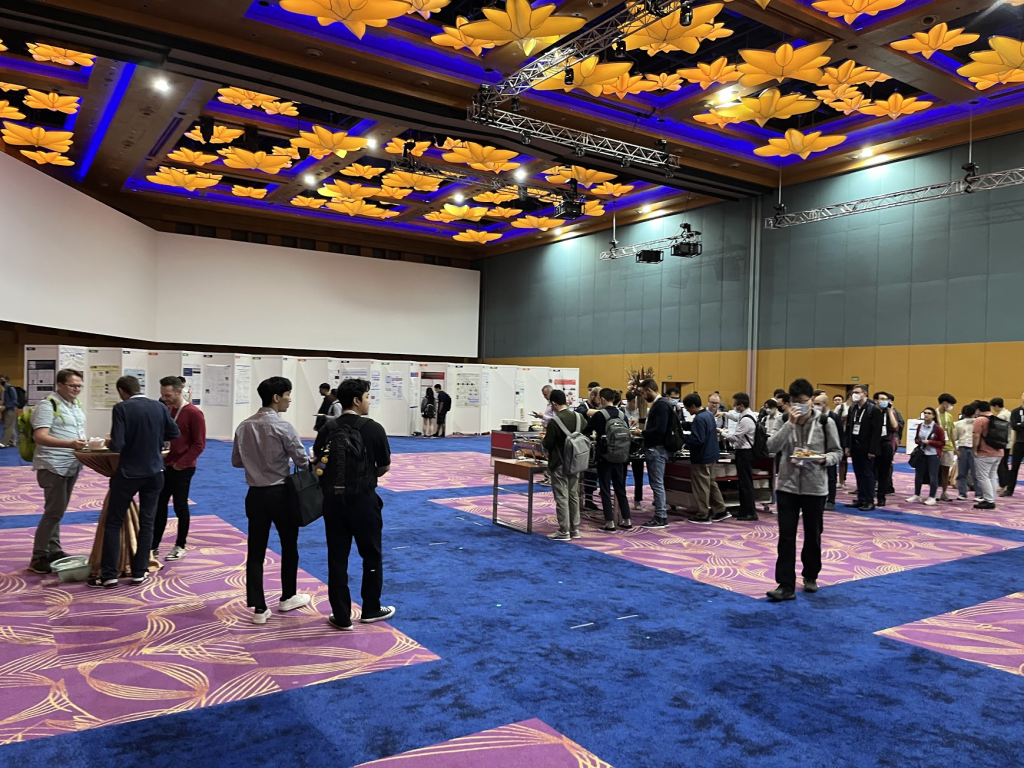 However, all posters were displayed during the entire conference. The main conference was also bookended by workshop days, which I will talk about more soon.
However, all posters were displayed during the entire conference. The main conference was also bookended by workshop days, which I will talk about more soon.
Specific Posters
I took pictures of a number of posters related to my research, or simply in topics that interested me. These included:
(1) Self-Supervised Learning:


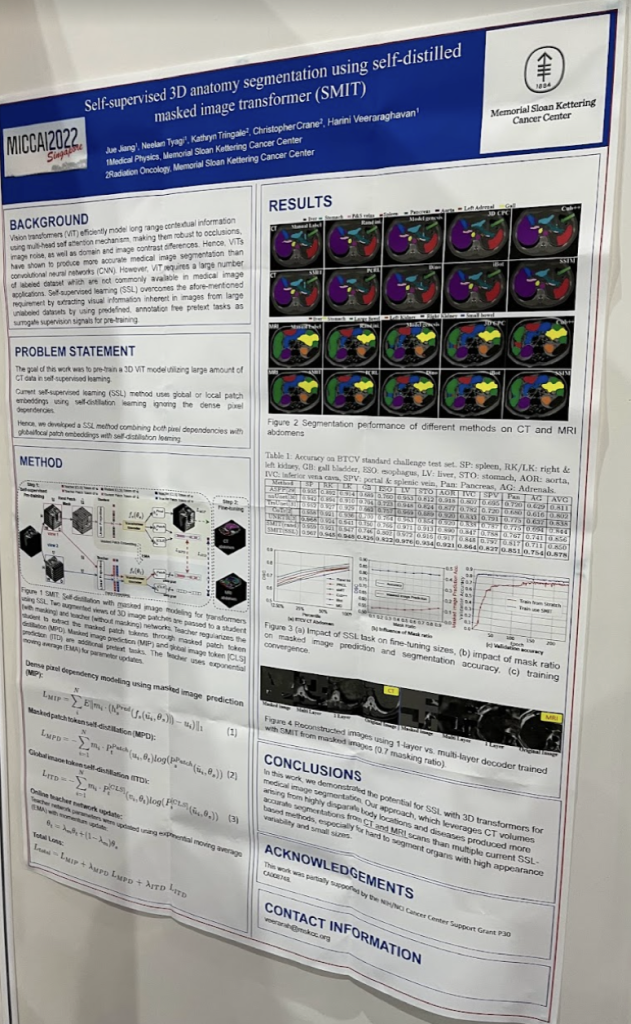

(2) Anomaly Detection and Few-Shot Learning:

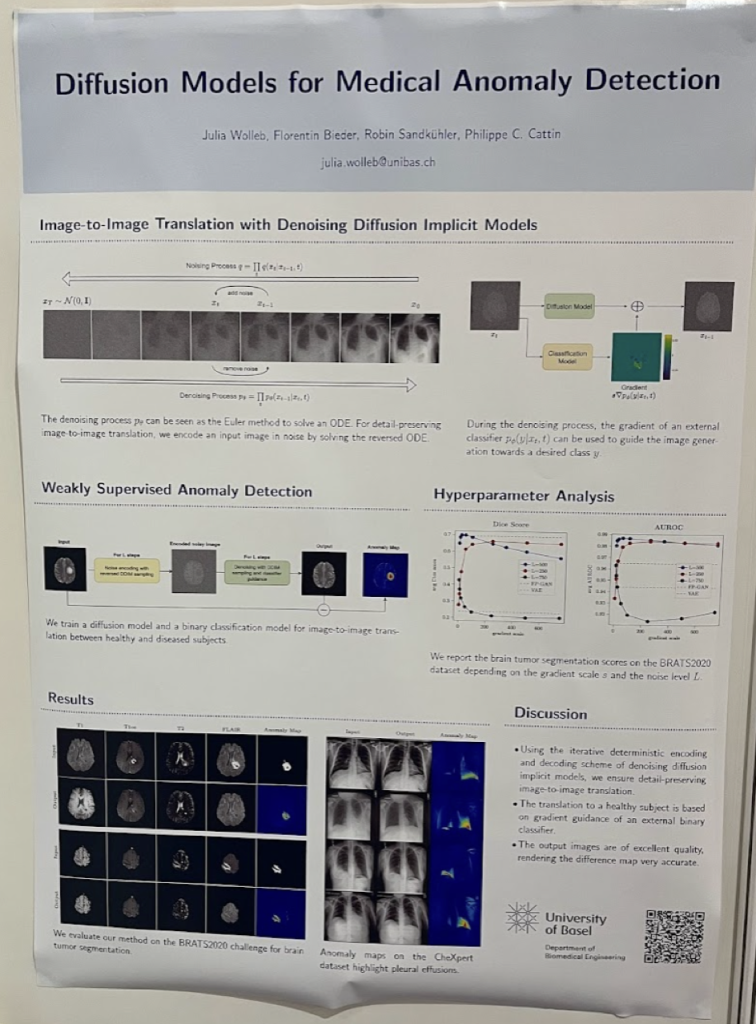

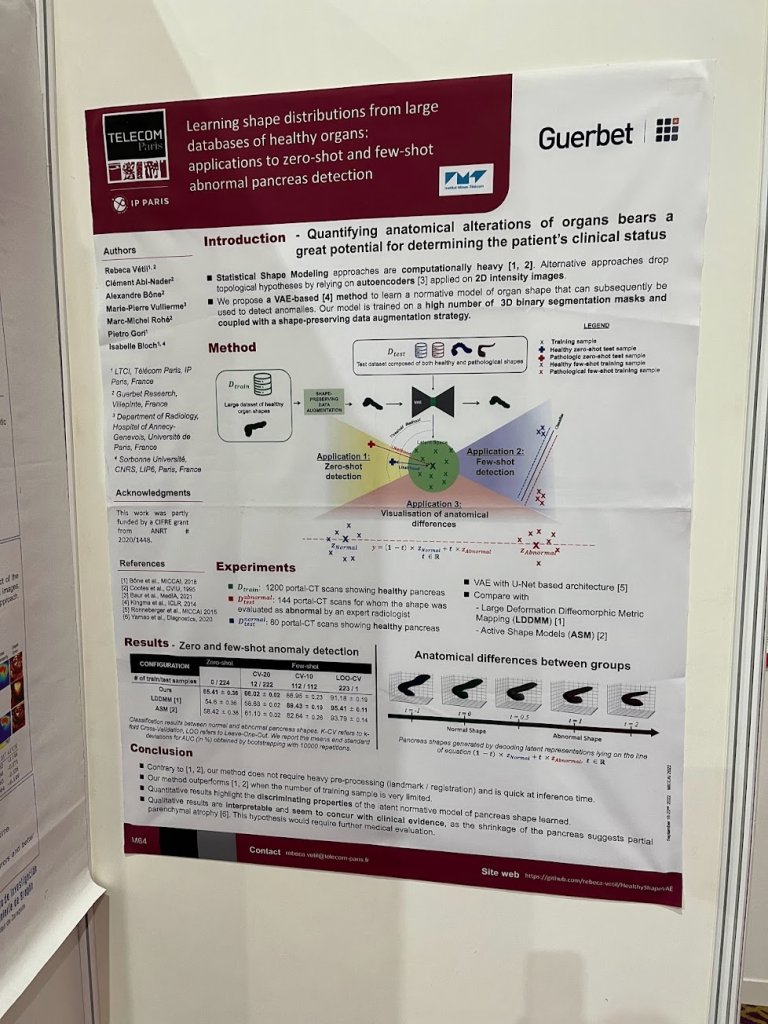
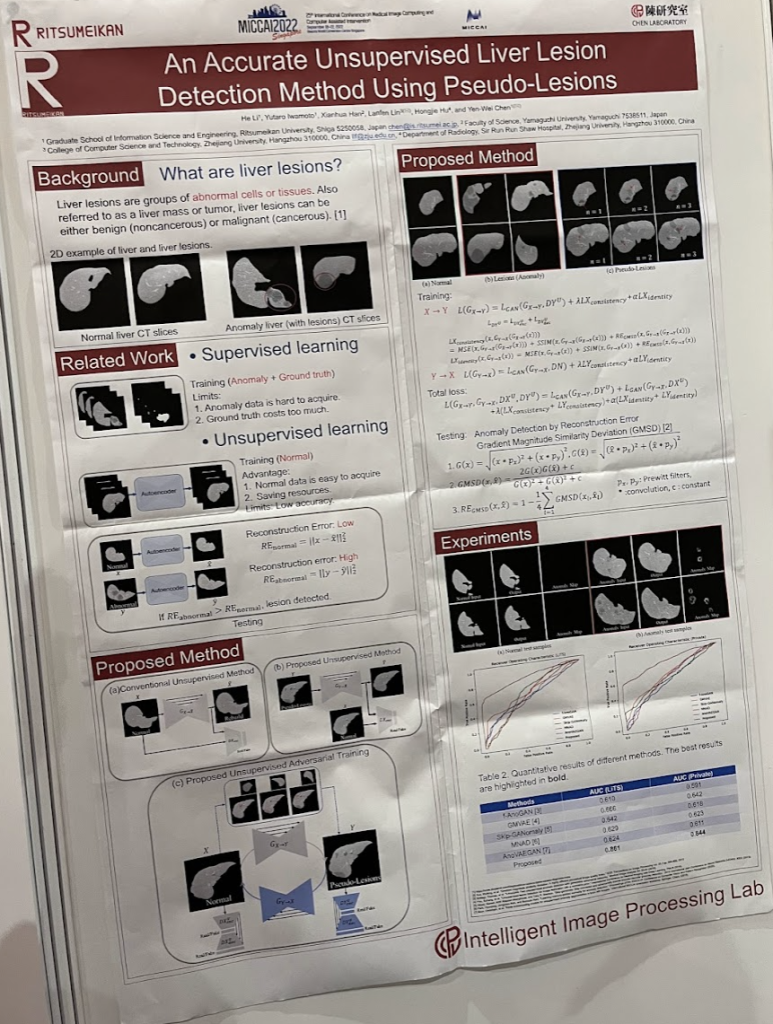
(It seems like diffusion probabilistic models are the “new GANs” for generative modeling).
and (3) Domain Adaptation:


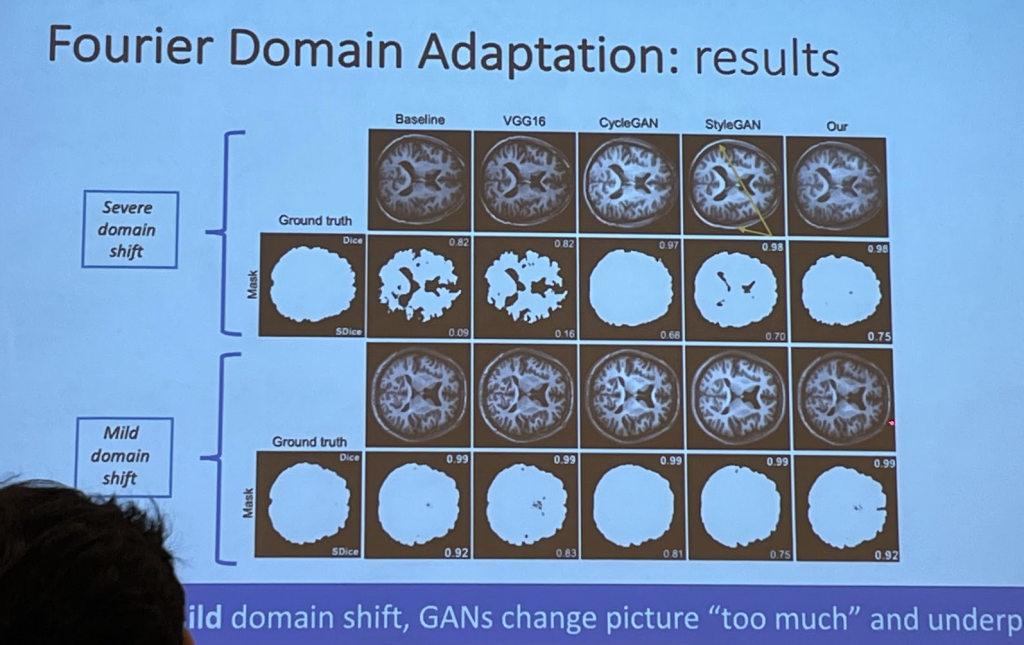
Something of note is that a lot of domain adaption methods used simpler, intuitive approaches (e.g. Fourier analysis and singular value decomposition) rather than big, data-hungry approaches like GANs. These are better for (typically small) medical imaging datasets, while also achieving equivalent or better performance!
There was also a thought-provoking debate on the question “Is AI ready for primetime clinical adoption?”, with some very interesting arguments from both sides.

The yeas ended up winning the popular vote.
I also spontaneously attended the workshop session on the last day, which was a great choice. There were workshops in a very wide range of highly specific fields, such as domain adaptation (the DART workshop) and generative modeling. The quality of workshop papers is generally high, and it is especially beneficial to attend one that is within your specific field.
Now, with my summary concluded, what did I think about the conference, and from the conference, what did I learn about the field of medical image analysis as a whole?
Reflections and Thoughts
Takeaway 1: General Trends in Medical Image Analysis Research
- The conference confirmed that medical image computing is an active field with many interesting technical problems to solve. It is ripe for creative approaches and novelty.
- These papers aren’t necessarily good because they are novel; they have novel technical contributions because they usually need to be to make useful advancements or to do something new compared to existing (often very recent) work.
- Medical image analysis (MIA) methods have shifted from “throw existing machine learning (ML) method x at medical data y”, to hybrid methods that combine “vanilla” deep learning with techniques particularly designed to work better within the application domain.
- Essentially all papers involved deep learning.
- Most authors were from computer science or electrical/computer engineering departments. Many papers were novel contributions to computer vision in general, that just happened to be applied to medical imaging.
Takeaway 2: Technical Trends
- There were a number of novel ways to generate positive and negative pairs for contrastive learning that are unique to medical images. I think that this is important because there may be much more intra- and inter-domain class variability in MIA, so applying traditional ML augmentations to generate contrastive examples may not make clean negative and positive pairs.
- Many works that approach or even take advantage of “data limitation” problems (such as limited labels, class imbalance, poor labels, etc.): self-supervised learning, weakly-supervised learning, and more.
- There was some use of transformers to model sequential correlations between 2D slices in 3D volumes (when the dataset was sufficiently large enough to make using transformers practical.
- Lots of diffusion models for generative modeling, in a wide range of applications (anomaly detection, registration, segmentation, etc). DDPMs seem to be taking over GANs in popularity, which makes sense! They come with a more formal and transparent intuition and have a number of practical benefits (such as computable data likelihood).
- U-Net is still in very wise use (not just for segmentation but now diffusion models); many people using nnU-net as well.
Takeaway 3: Connect and Socialize!
- Many posters/orals had QR codes for the paper, code, their Twitter, Linkedin, website, etc.
- Making and maintaining research connections is beneficial for everyone involved!
- No matter how good your research is, it doesn’t matter if no one is aware of its existence.
- If you’re attending in person, the state of the art is literally at your fingertips; it’s a really cool feeling.
- Also, if you can go in person, your own work will be much more visible.
Conclusion
Going to MICCAI 2022 in person was an incredible experience full of scientific passion. It allowed me to have a finger on the pulse of the bleeding-edge research in my field and reminded me of why I love being a scientist and working in this area. If anyone is able to go to such a conference in their area of study, I highly recommend it, especially as a student.
